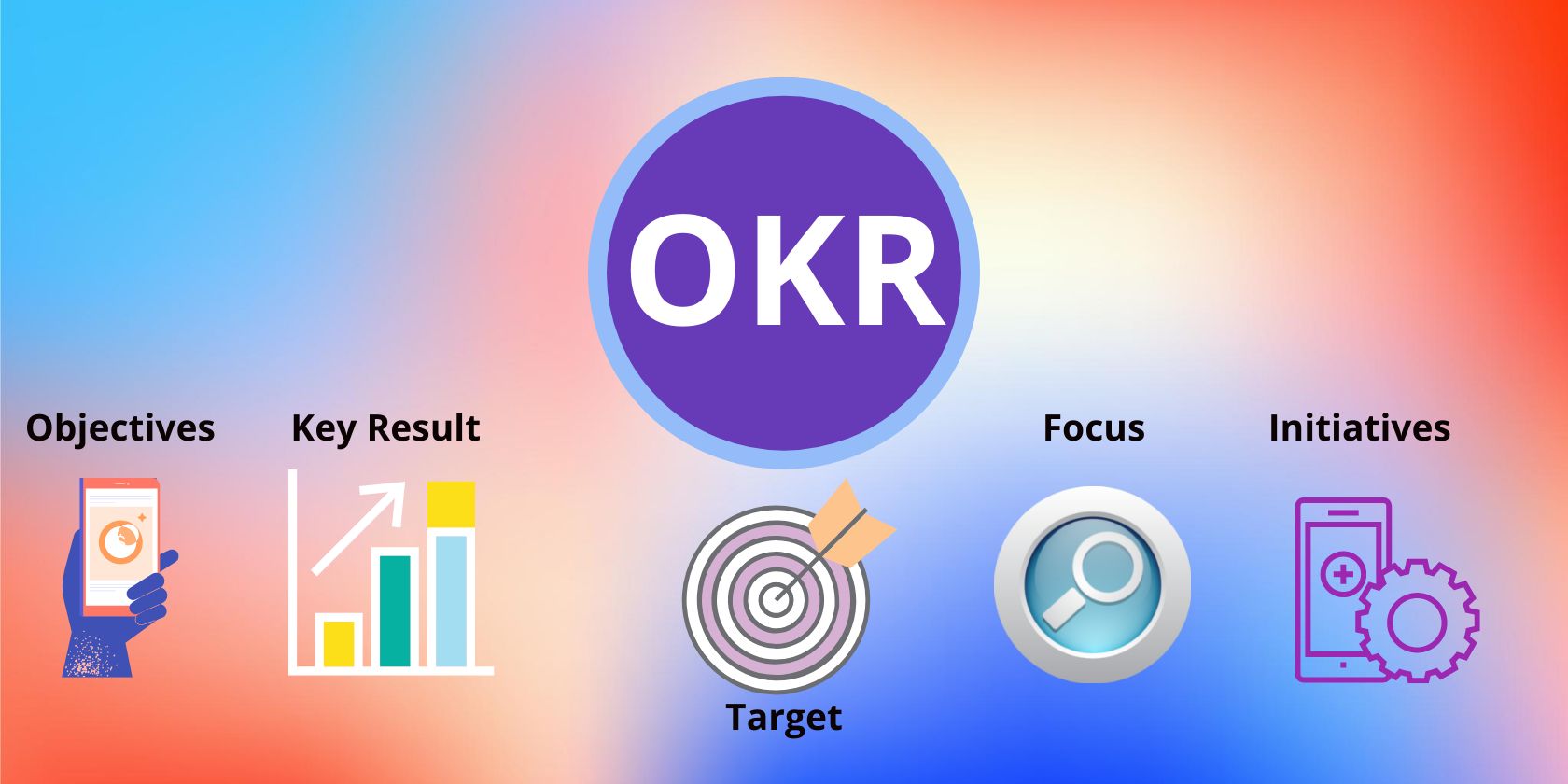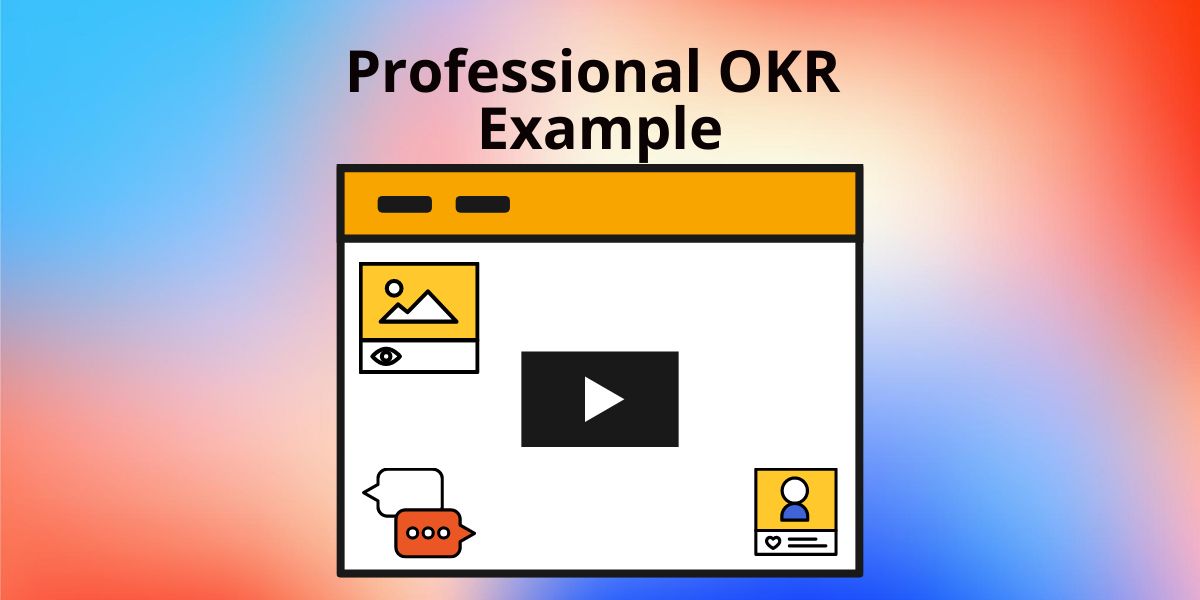The Objectives and Key Results (OKR) framework helps you align measurable goals with daily tasks for better productivity. The OKR method is widely used in enterprises, but can be equally effective in SMEs. Professionals and freelancers can also use it at the personal level for a positive impact on their productivity.
In this article, we will discuss OKR components, its common examples, and how to create an OKR.
What Is OKR?
Objectives and Key Results (OKRs) is the data-driven goal-setting method that ensures that all team members or employees work to achieve the shared measurable goals. By using this simple framework, you'll make sure everyone is on the same page. Instead of goal development, it focuses on goal accomplishment.
The shorter goal cycles of this method allow organizations to adapt to changes more quickly. Since transparency is one of the prime features of OKR, everyone has access to it. This greater visibility allows all the team members to focus on the shared target.
The following three components form the basis of this unique method. Knowing these will help you understand how this method differs from traditional goal-setting.
1. Objectives
As the name suggests, an objective is your target or something you want to achieve. It describes the destination of your journey. An objective shouldn’t include any metric or technical information so that it remains intelligible to everyone.
Usually, a good objective is qualitative and denotes the changes you can expect if it becomes successful. With aspiring objectives, you or the team can reach further in accomplishing them.
Also, an objective has to be time-bound. Set a deadline by when you expect to achieve it. It should also be aligned, understandable, and high-impact.
2. Key Results
Key Result refers to the measurable metrics required to achieve the Objective. In simple language, ask yourself how to get to your objectives. The answers that you’ll get are the key results. It helps you to calculate your progress towards the goal using a target value.
It works as the distance tracker to let you understand how far you are from achieving your objectives. Key results have to be measurable, specific, and obviously, ambitious.
The metrics help you quantify the success rate of your efforts. Different teams can even use a separate set of key results to achieve the same target.
3. Initiatives
The third integral part of OKR is initiatives. It refers to all the tasks and projects and tasks you do to achieve a key result. Consider the objectives as the destination and the key results as the indicators for moving in the right direction. Then, initiatives are what you do to get yourself moving.
For example, if you want to finish a project and get 25% of the tasks done in one week, you've got to get the team to work eight hours a day. It should be time-bound, within the circle of influence, and under control.
How to Form an OKR?
While setting up OKR, remember that success means reaching beyond your target. So, make sure your objectives force the team or yourself to push beyond the perceived limit. While creating an objective, define some quantifiable and achievable key results based on performance, engagement, or revenue.
You have to make sure that everyone is aware of their goals as well as the goals of their teammates. Arrange for review meetings so that everyone can discuss the progress and challenges. Have transparent and consistent communication to establish accountability among the team members.
Regularly review OKRs depending on the circumstances. Don’t shy away from updating the OKRs whenever necessary. When there is significant progress or goal achievement, recognize and reward the hard work for better team bond and boosted motivation.
Free-to-Use OKR Tools
An OKR software helps you deal with your goals and objectives in a better way. Here are some top OKR apps suitable for personal and business users.
1. Todoist
Todoist lets you visually prioritize OKRs with your current projects and subprojects. Thus, your daily tasks get aligned with the key results.
You can use this app to create a project for each objective and enter the key results separately. Adding a due date for reaching each key result will help you stay on track. Make reviewing the key results a weekly recurring task to identify progress and difficulties.
Download: Todoist for Windows | macOS | Android | iOS (free)
2. Perdoo
Perdoo is an OKR app that teams or businesses of all sizes can utilize for managing productivity goals. Besides sharing your real-time strategies with the team, you can also use this platform to set targets, align resources, and assess progress along with reports.
Its centralized dashboard lets you monitor your weekly achievements. Setting, tracking, and visualizing OKR becomes easy with this tool.
3. Bit
Bit makes sure your team works productively and efficiently through its workspace. You can also utilize the workspace for personal and organizational use. It offers a space accessible to all where you can store the OKRs of the organization.
You can communicate and collaborate around any goals, short-term projects, content, meeting minutes, and notes on this platform. Features like smart search, real-time co-editing, and inline comments confirm that you achieve your goals.
4. Koan
Using Koan, teams can set up goals, reflect on progress, and deliver substantial results through collaborative work. It uses critical metrics that benefit you to plan business strategy, receive team feedback, and make informed decisions.
The tool offers a presentation mode and tree view mode for organizing and managing your objectives. Besides, you can leverage its collaborative features to work across teams and departments without any roadblocks.
Example of Common OKRs
You can create your own OKRs effortlessly by observing some examples. The following is the OKR for a freelance gig worker who wants to create a portfolio website:
Objective: Launching a portfolio website in a month.
Key Results:
- Research the best domain name available and buy it in the first week.
- Choose the right CMS by the second week.
- Write and publish your first blog by the third week.
- Publish two to three blogs by the end of the fourth week.
OKRs are equally important in personal life. Here is an example of an OKR that you can implement in your personal life:
Objective: Reading a 100-page novel within three hours.
Key Results:
- Build the habit of reading every day without a miss for one week.
- Finish 20 pages in one hour on the second week.
- Increase reading speed by 25% on the third week.
- Complete reading a book in four hours on the fourth week.
- Increase reading speed by 35% more to reach the target.
OKRs Are for Focused Goal Management
OKR method is an effective solution that can assist you in achieving directional success. Now that you know how to develop an OKR in practical situations, move forward with implementing it to achieve your goals.




